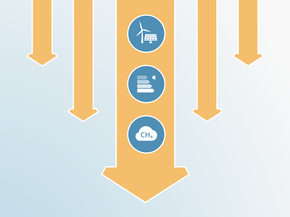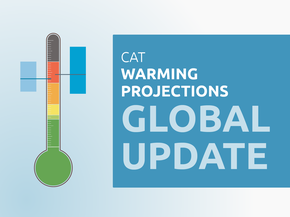Assumptions
Historical emissions
Historical emissions from 2000 to 2021 are taken from the Biennial Transparency Report (BTR) and extended back to 1990 to complete the series and forwards to 2023, using PRIMAPhist sectoral growth rates. Both are in AR5 GWPs. (Government of Peru, 2024; Gütschow et al., 2024)
The LULUCF data points from 2010 until 2021 were taken from the BTR.
NDC and other targets
The pledge for 2030 is based on the latest NDC submission document from December 2020 (Gobierno del Perú, 2020a). Peru’s submission covers emissions from all sectors and major gases (CO2, CH4, N2O, HFCs, PFCs and SF6). The previous NDC covered only CO2, CH4 and N2O, for all sectors.
An absolute emissions level, including LULUCF, is provided directly in the NDC for the unconditional and conditional targets. To distinguish emissions reductions that are attributable to the LULUCF sector, the CAT assumes that the share of LULUCF mitigation efforts will be the same as it was in the first NDC submission, for both unconditional and conditional targets.
The assessment of Peru’s first NDC considers the mitigation split presented in the roadmap for NDC implementation. According to the technical background document of the first NDC, for the unconditional target, 76% of the 20% emission reductions below BAU will be obtained from measures in the LULUCF sector. For the conditional target, 69% of the 30% emission reductions below BAU will be obtained in the LULUCF sector.
Current policy projections
The lower end of the current policy projections range is constructed based on:
- Total energy-related CO2 emissions – taken from the BAU scenario from the 8th edition of the APEC Energy Demand and Supply Outlook (APERC, 2022). The BAU scenario provides a reference case to project CO₂ emissions based on recent policies and trends in the energy sector. It includes all energy sector policies through 2022 and assumes trends in energy efficiency and deployment of renewables continue without change. APEC’s BAU scenario assumes that electricity generation will grow by 69% until 2050 due to rapid economic growth, while electricity capacity will increase by 48%. Peru’s generation mix remains dominated by hydropower and gas-fired generation, with wind and solar power together accounting for 6.7% in 2050. This scenario assumes that Peru becomes a net natural gas importer around 2039 as demand rises rapidly and domestic natural gas production declines with the depletion of the Camisea field. The APEC scenarios use historical energy and CO2 data derived from IEA Energy Balances of non-OECD countries and CO2 emissions from fuel combustion. The harmonisation of APEC energy-related CO2 with historical data from the BTR results in about a 6 MtCO2e decrease in emissions projections for 2030, compared to our previous projections.
- Non-CO2 emissions - taken directly from the US EPA “Non-CO2 GHG emissions” report with data available for the period between 1990 and 2030 (EPA, 2019).
- Other CO2 emissions - estimated based on their share in the last inventory with data until 2021 and their expected contribution under BAU in 2030. Data was interpolated linearly in between years and harmonised with historical data.
The upper end of the current policy projections range is based on the BASE scenario in the report “Costos y beneficios de la carbono-neutralidad en Perú” [Costs and benefits of carbon neutrality in Peru] from BID. This scenario assumes no further mitigation policies are implemented after 2018 and that future emissions follow a linear trend from the last historical year, 2019. This data was interpolated linearly between points and harmonised with our latest historical data point, 2023 (Quirós-Tortos et al., 2021). This scenario presents the most pessimistic projection of Peru’s emissions trajectory. This is a high upper bound for Peru and was selected because while policy has been created since 2018, in many cases implementation remains unclear and policy roll-backs have occurred. The higher upper bound is additionally a result of the updated historical base year (projections now start from a higher point ) and switch from AR4 GWPs to AR5 GWPs.
Net-zero target and other long-term targets
Peru has committed to reaching net zero by 2050. To calculate the residual emissions we considered the “carbon neutrality” scenario presented in the report “Costos y beneficios de la carbono-neutralidad en Perú” (Quirós-Tortos et al., 2021). This assumes the carbon-neutrality target covers all gases and will be achieved through reductions in sectoral emissions in combination with LULUCF sink. The carbon neutrality scenario gives an absolute emissions level and corresponding LULUCF sink level for 2050. To extract a full timeseries, we used linear interpolation between data points.
Global Warming Potentials
The CAT uses Global Warming Potential (GWP) values from the IPCC's Fifth Assessment Report (AR5) for all its figures and time series. Assessments completed prior to March 2025 use GWP values from the Fourth Assessment Report (AR4) and those from before December 2018 (COP24) used GWP values from the Second Assessment Report (SAR).
Further analysis
Latest publications
Stay informed
Subscribe to our newsletter




